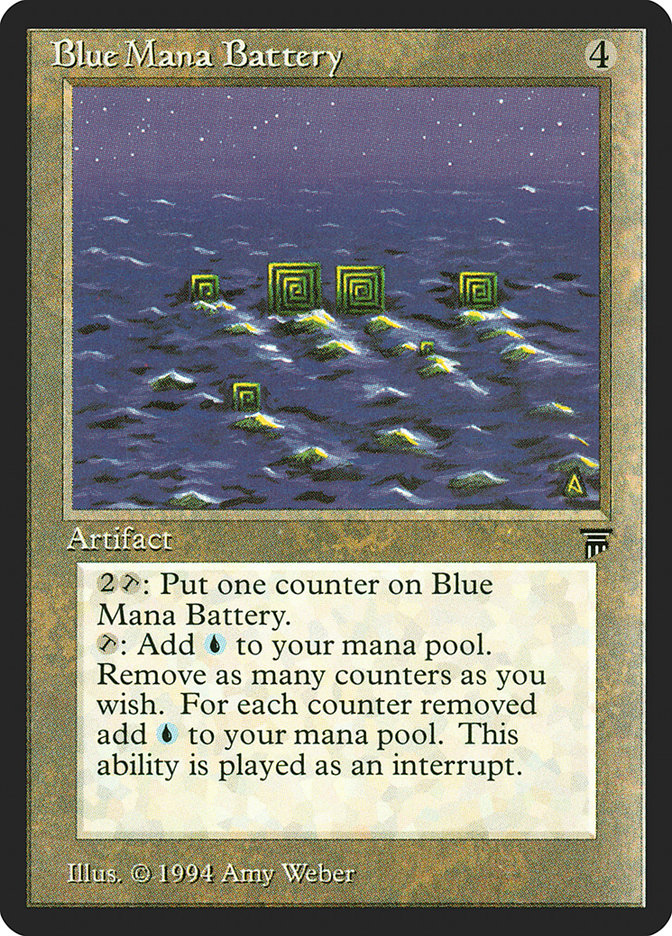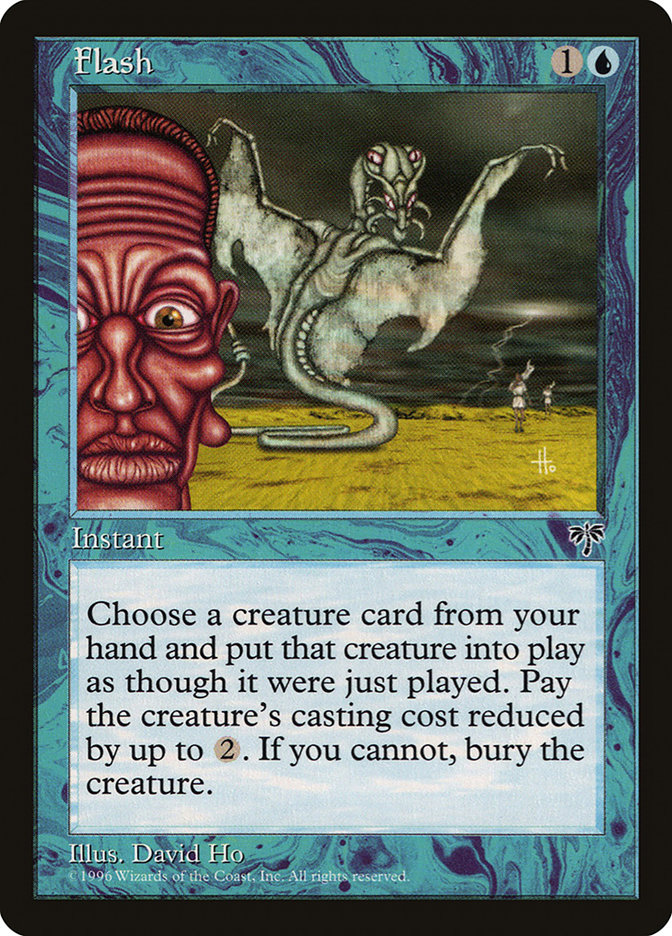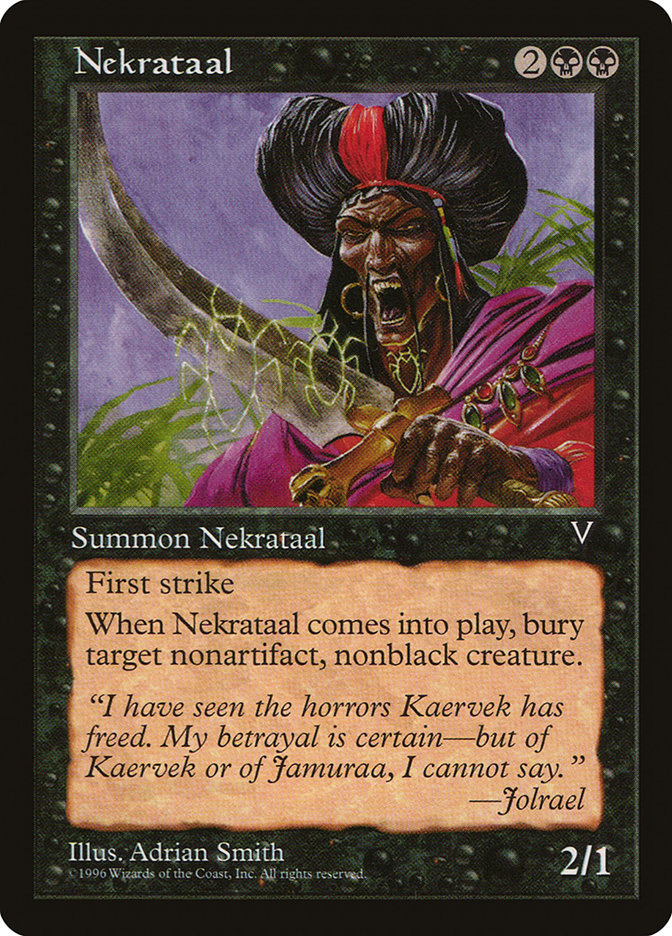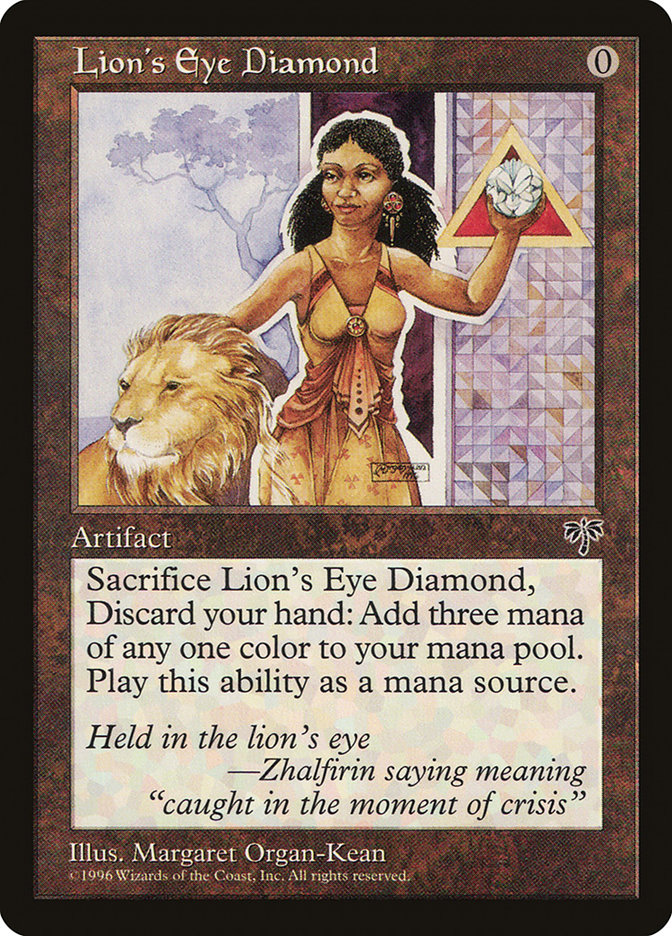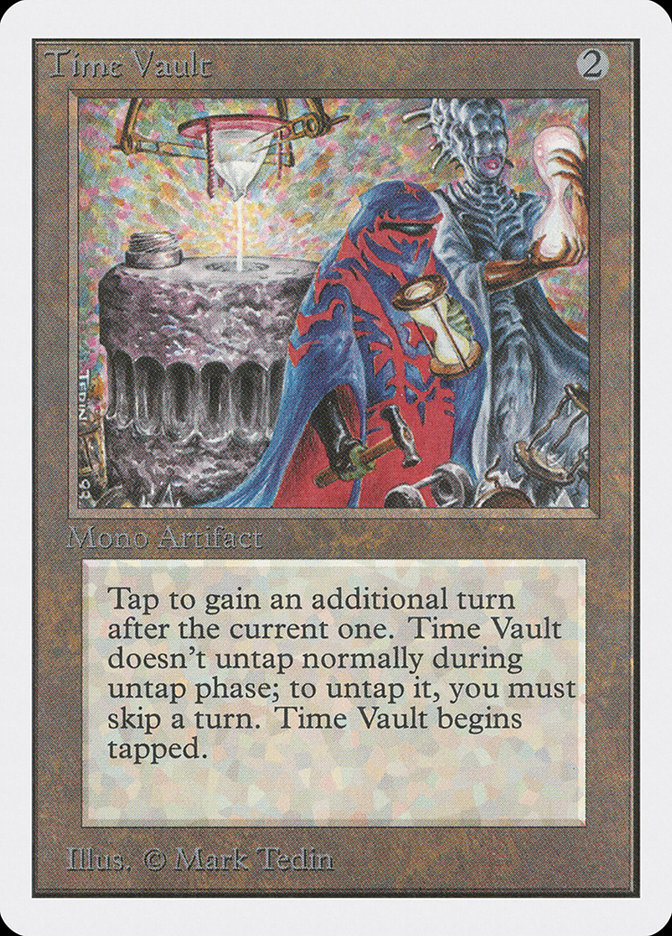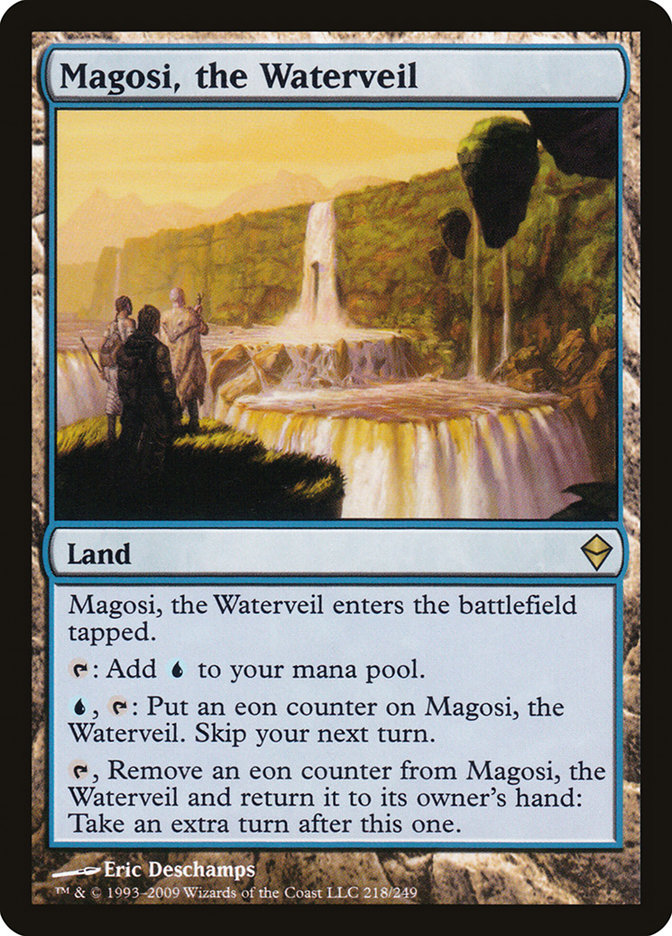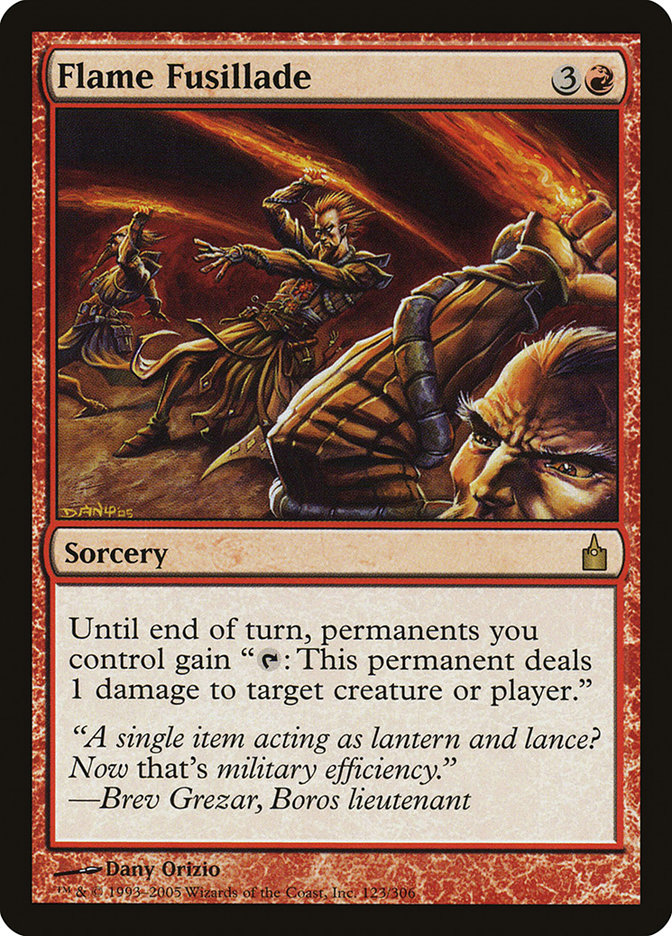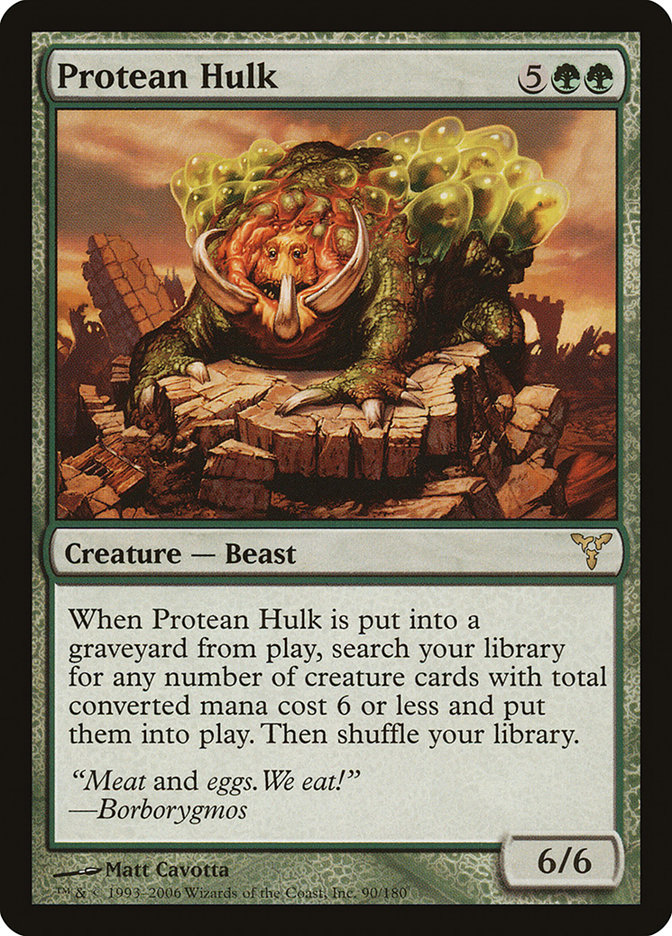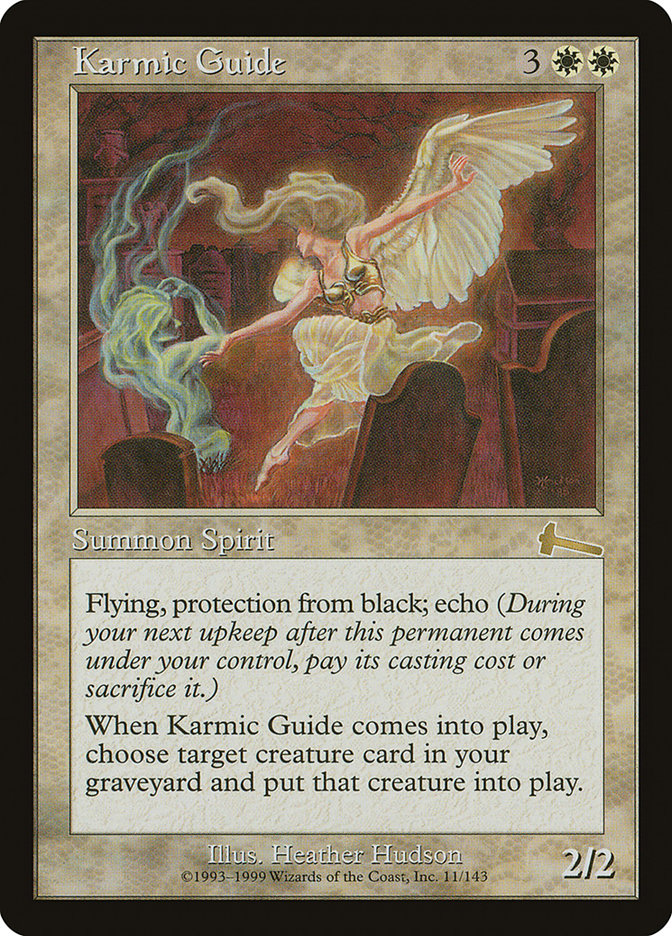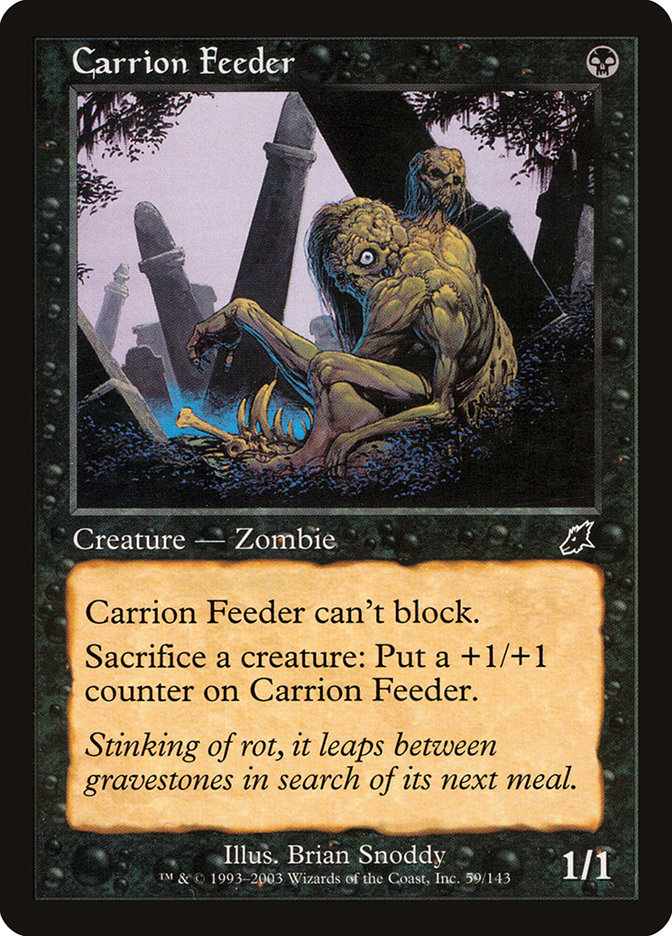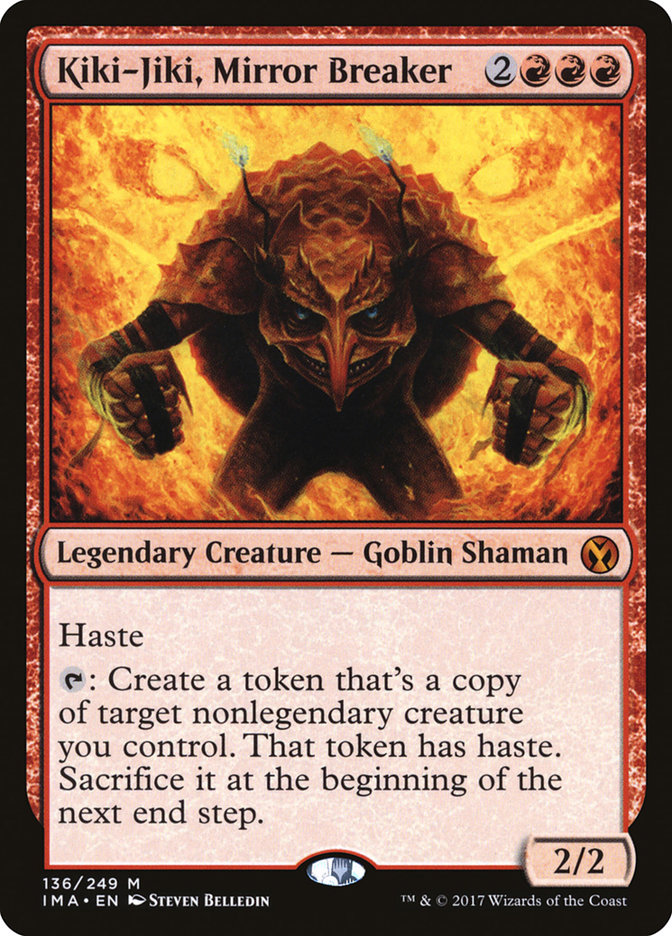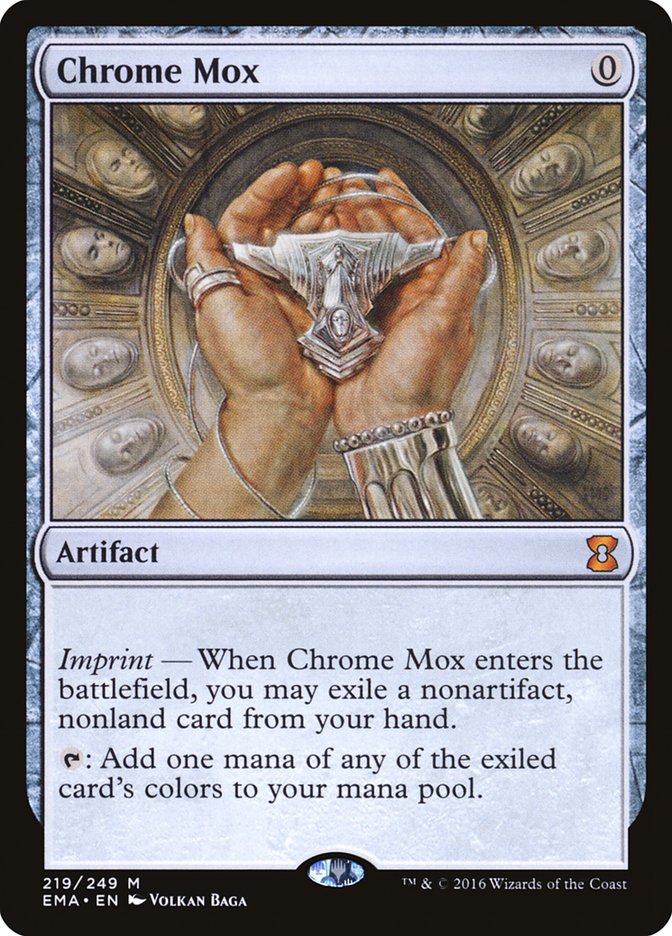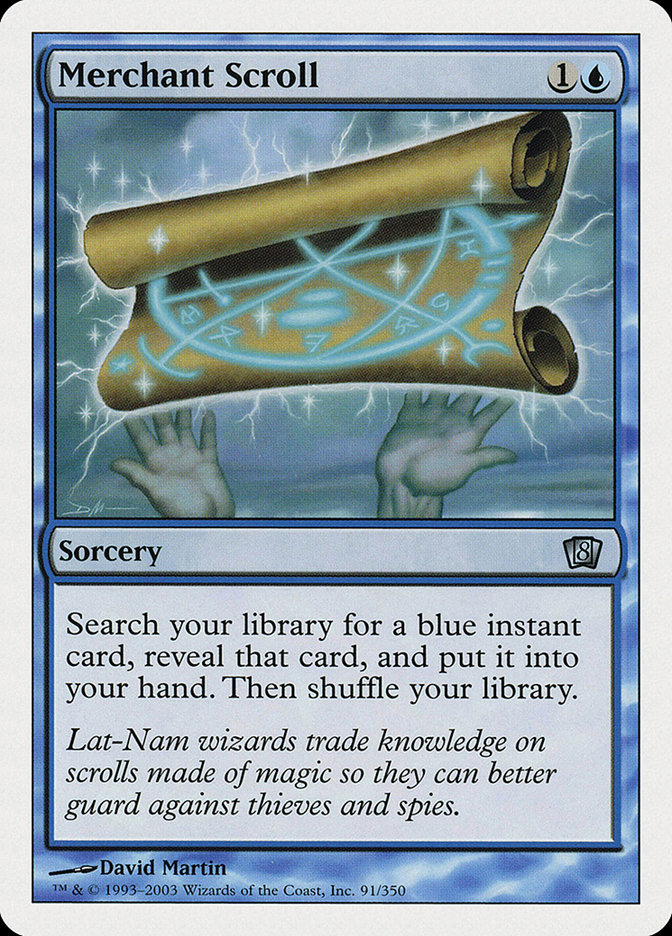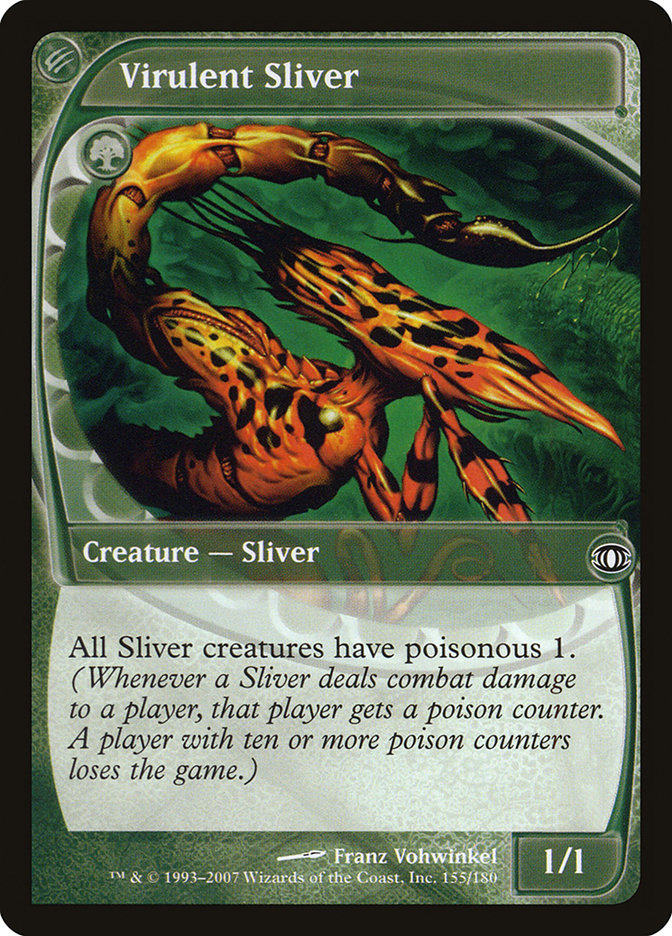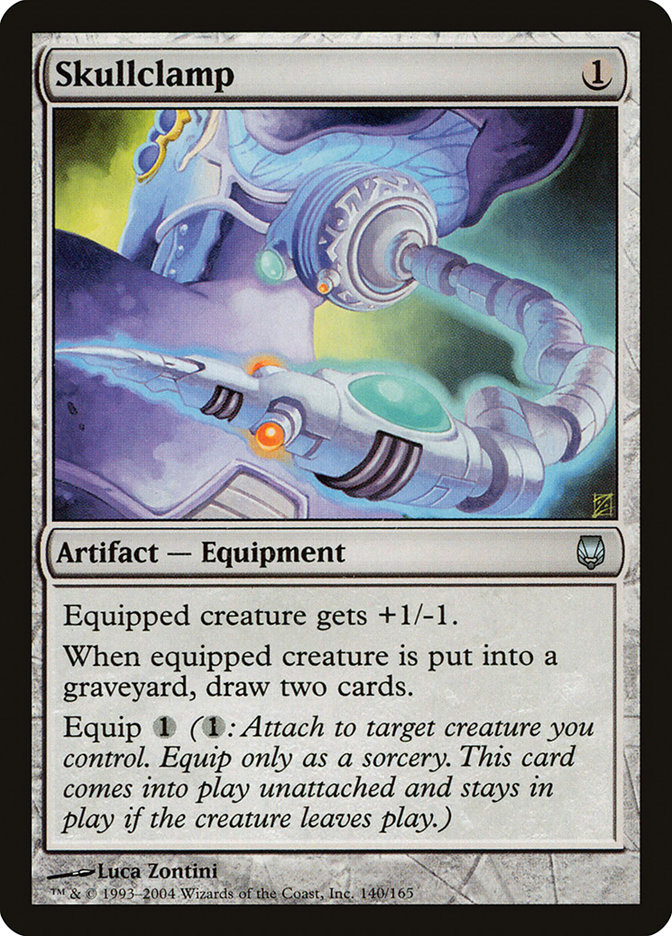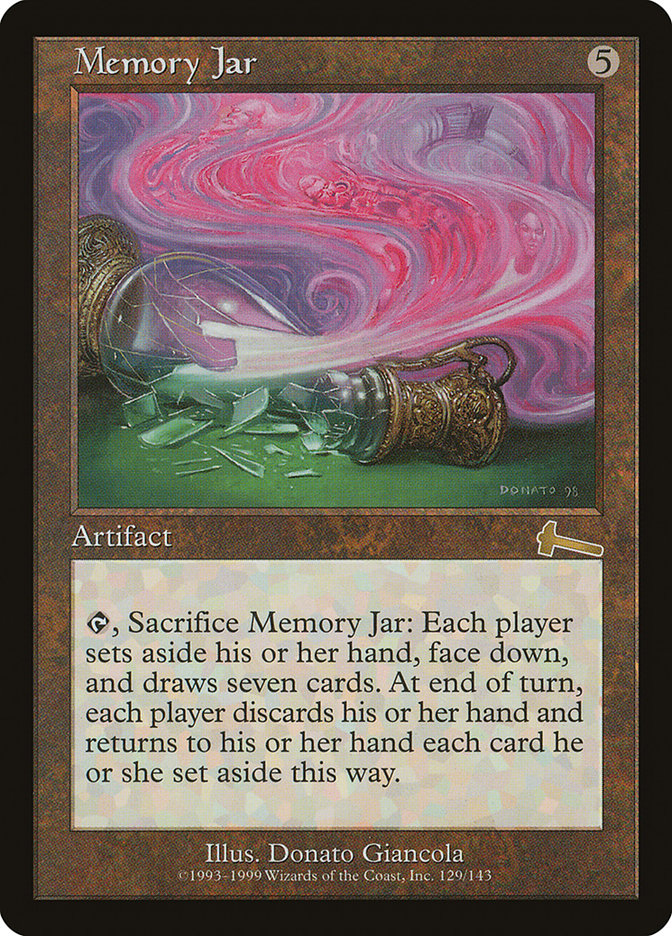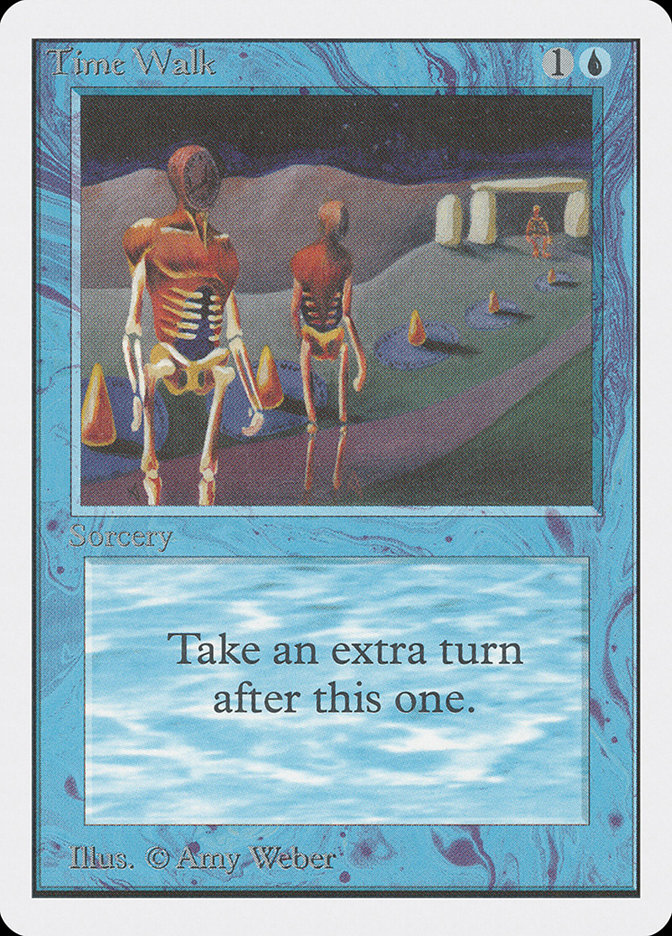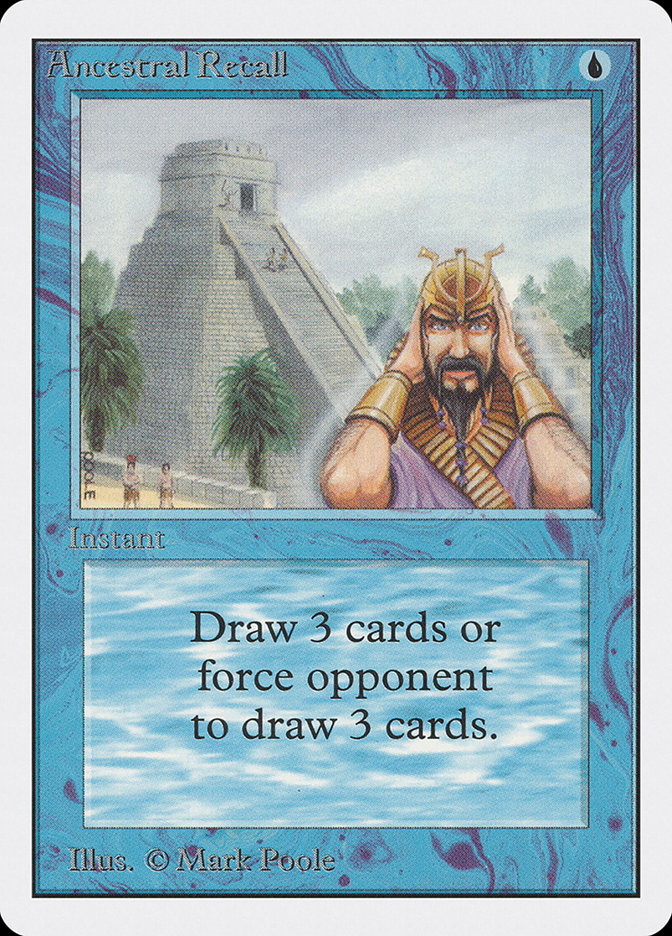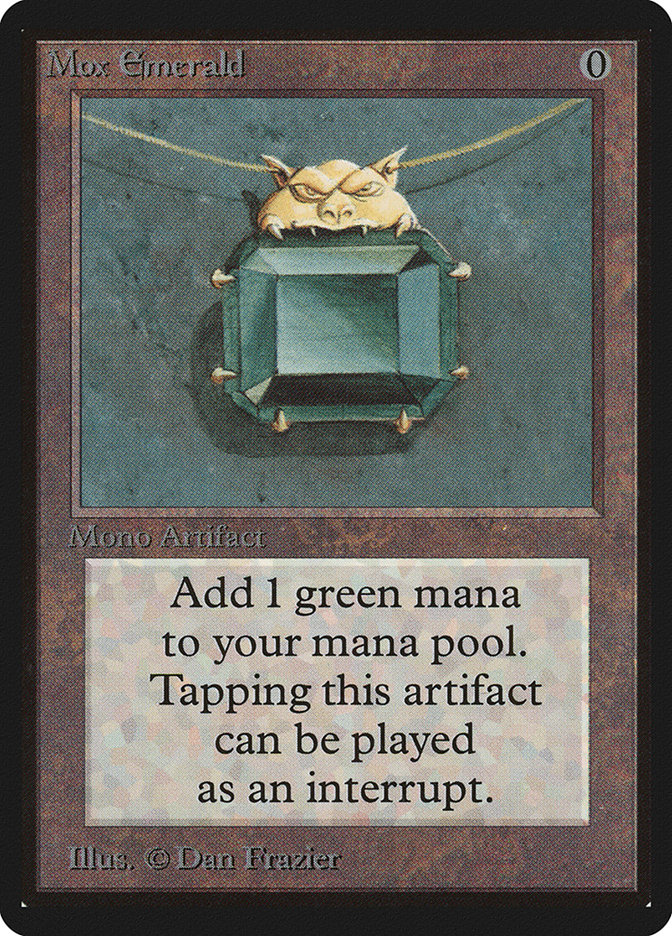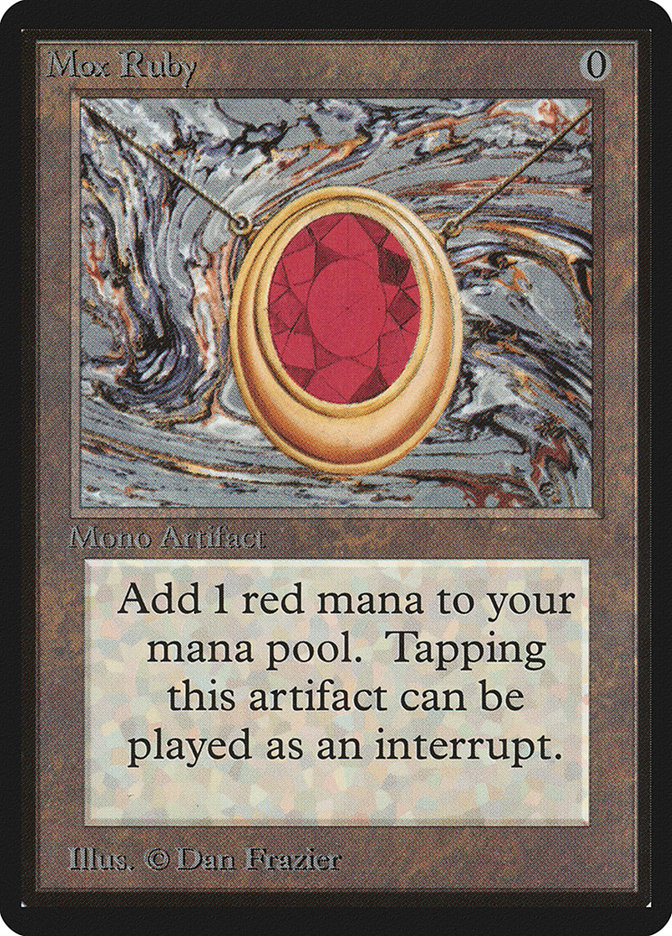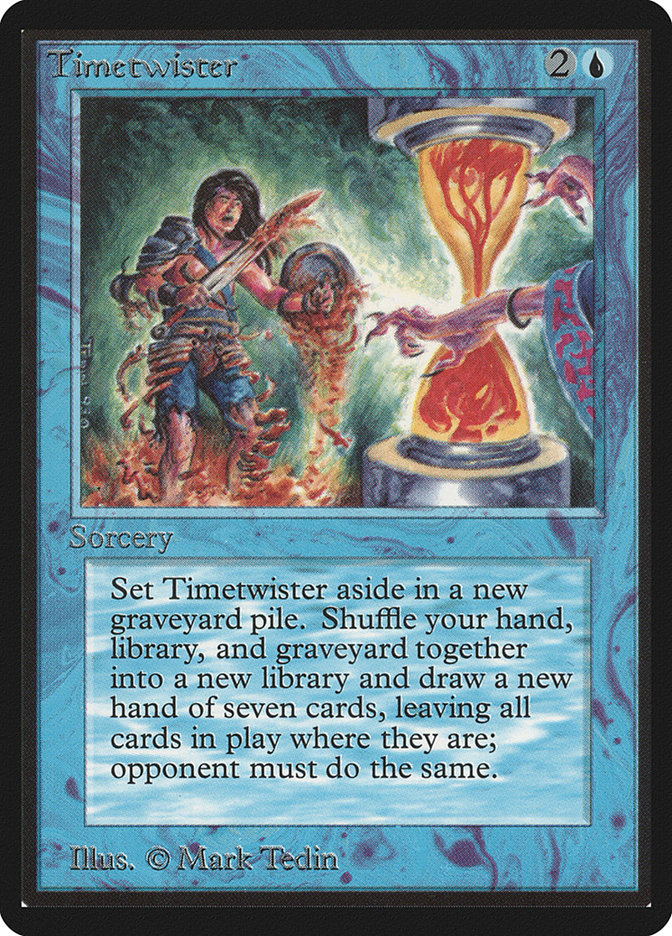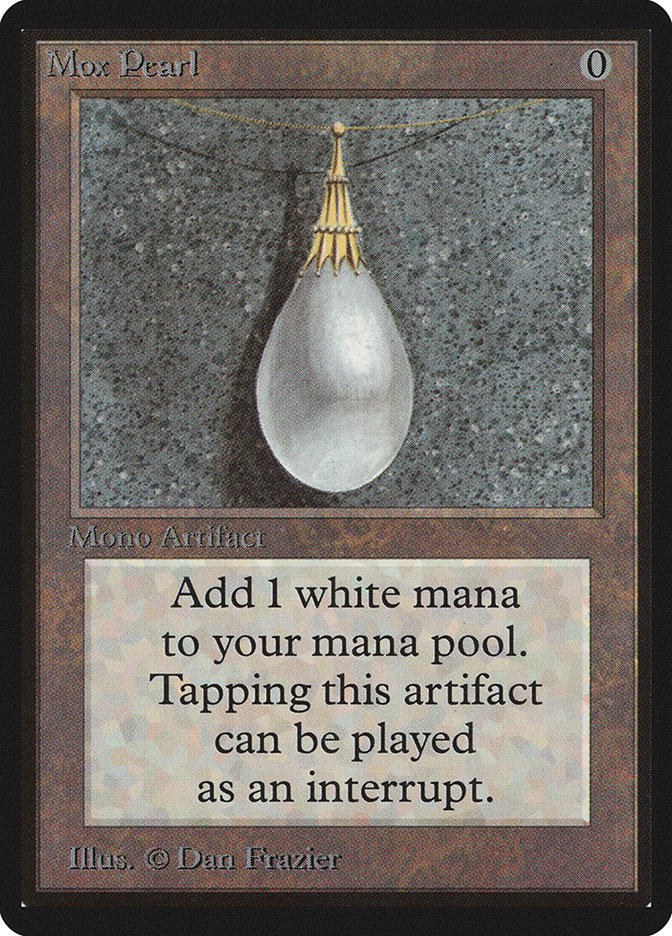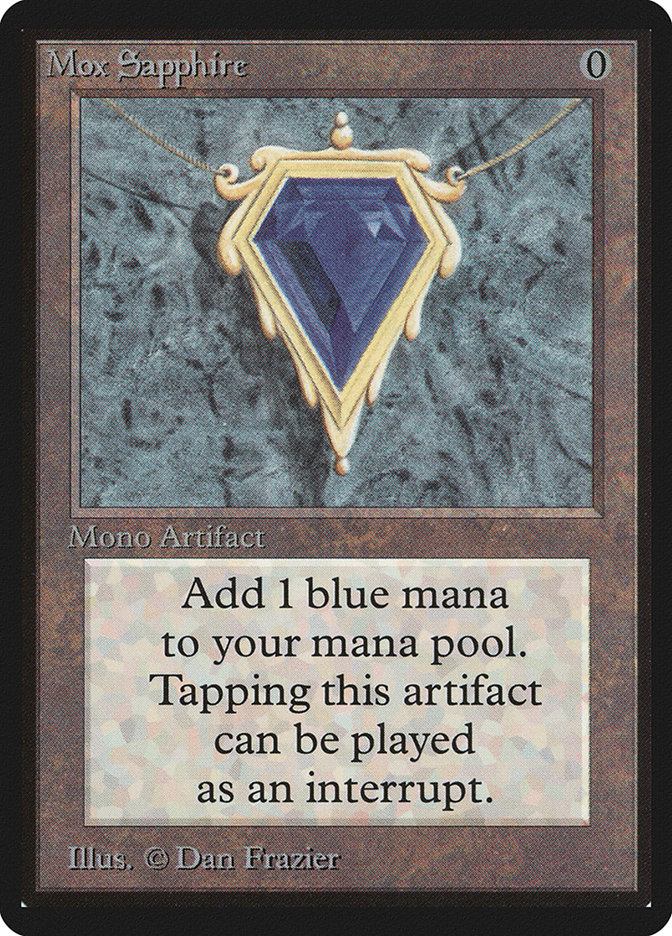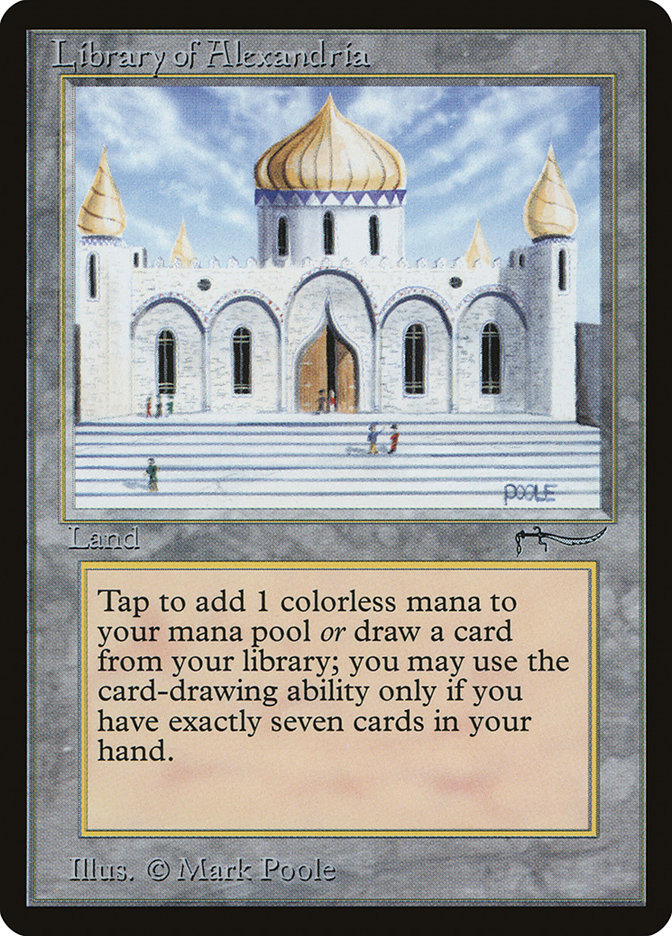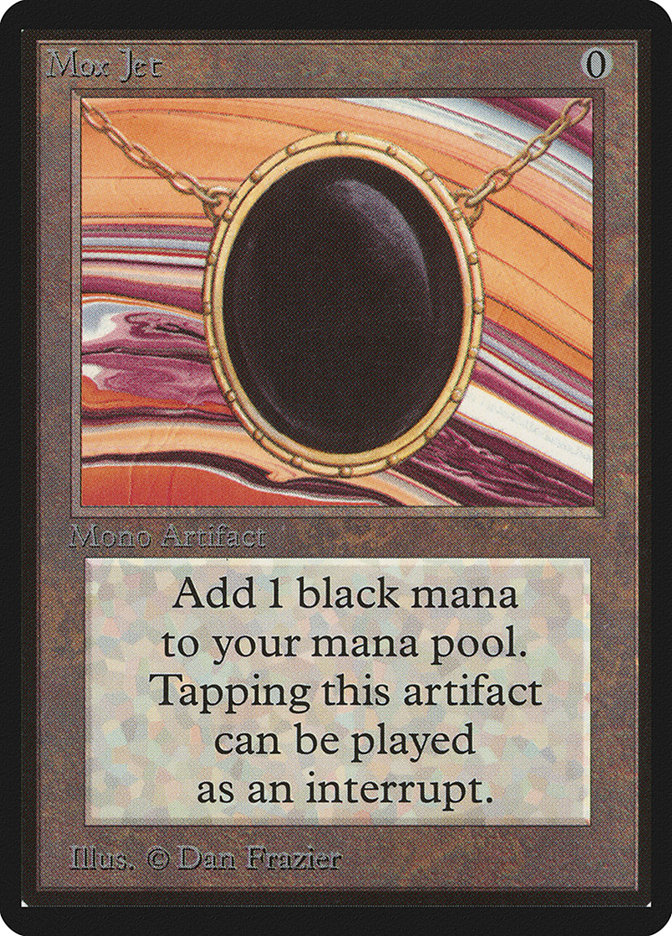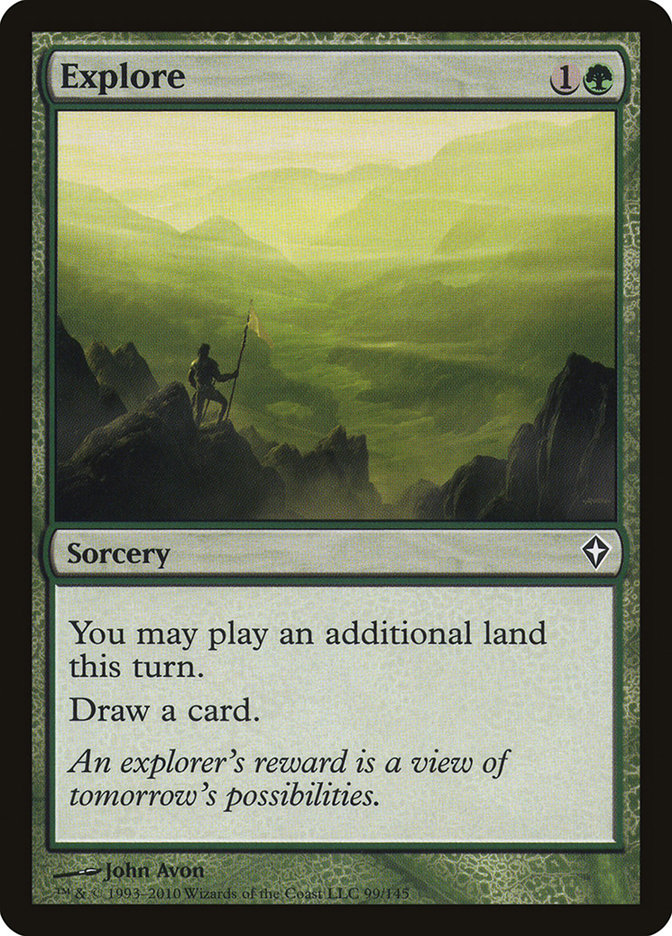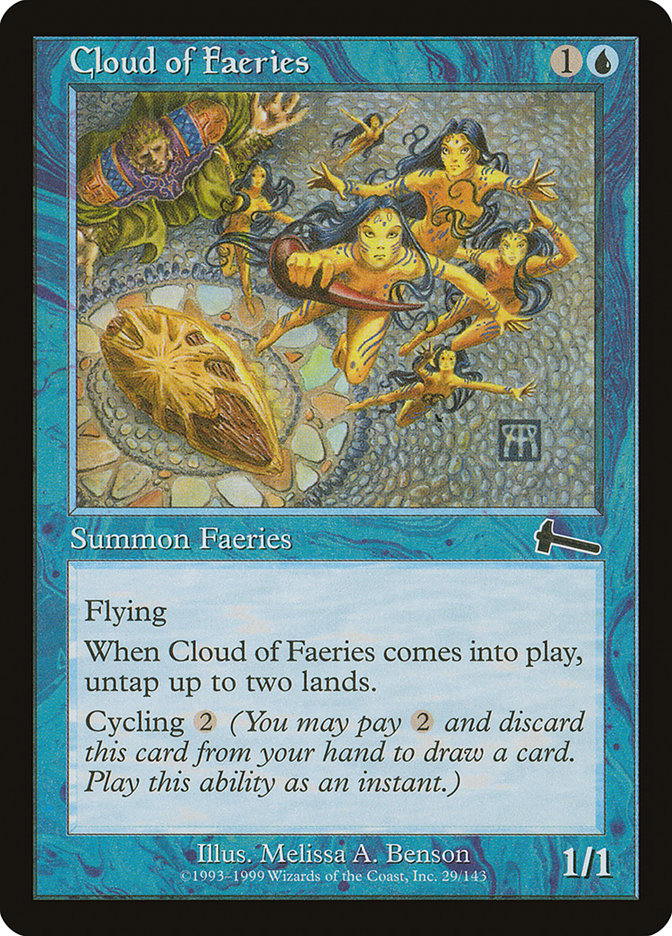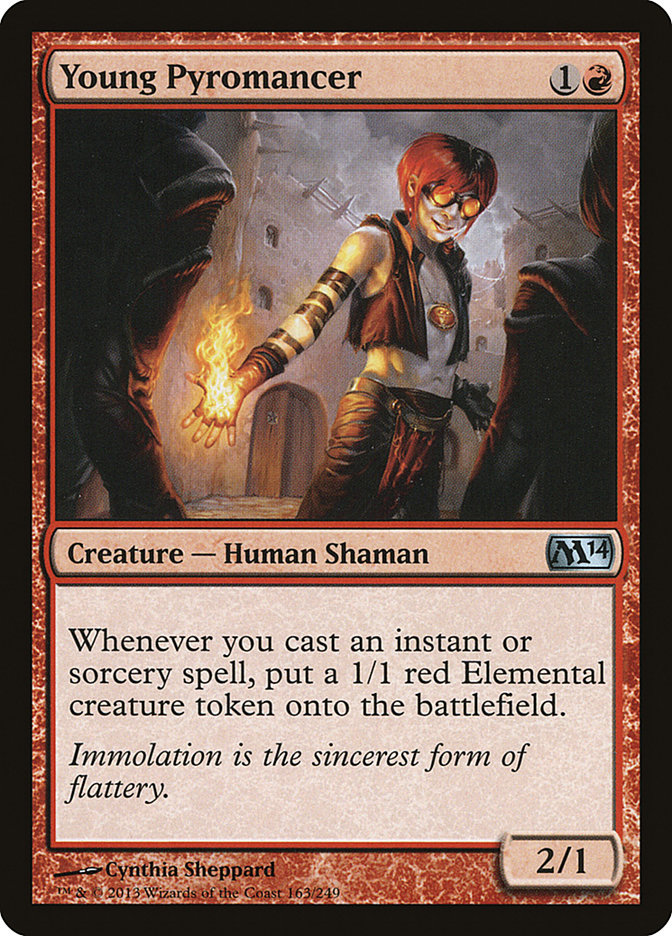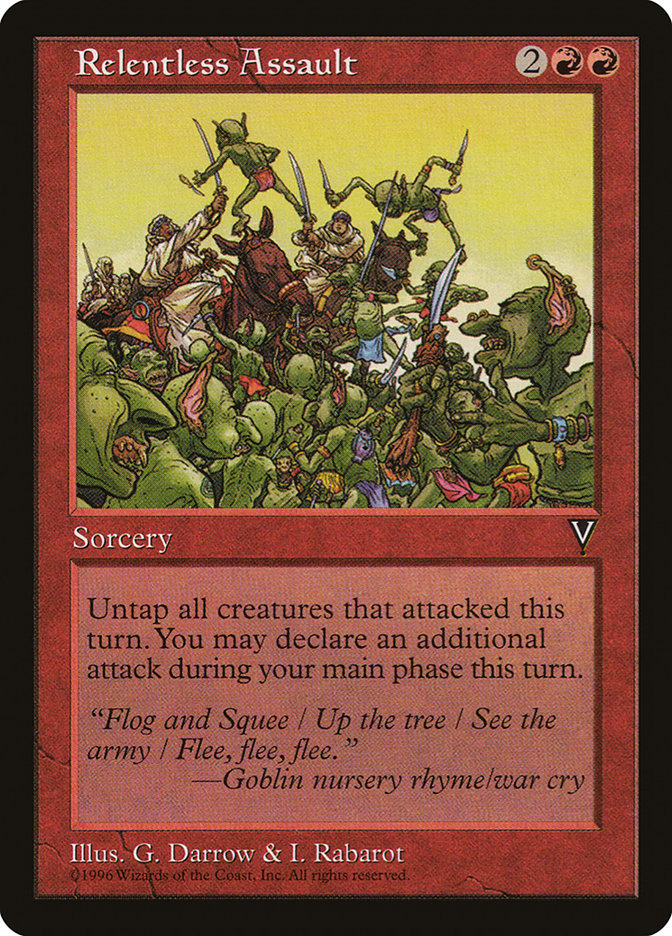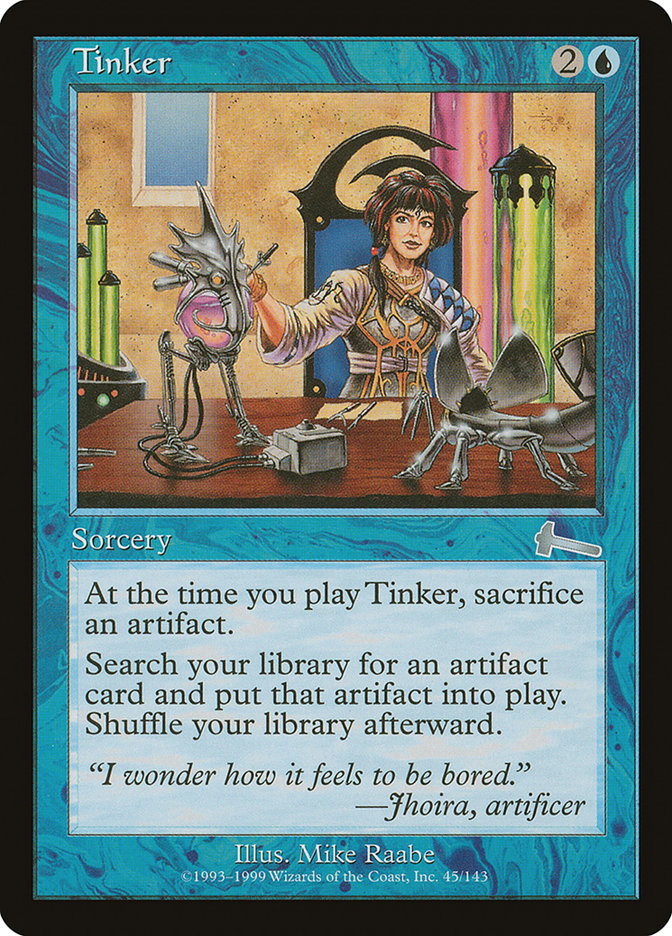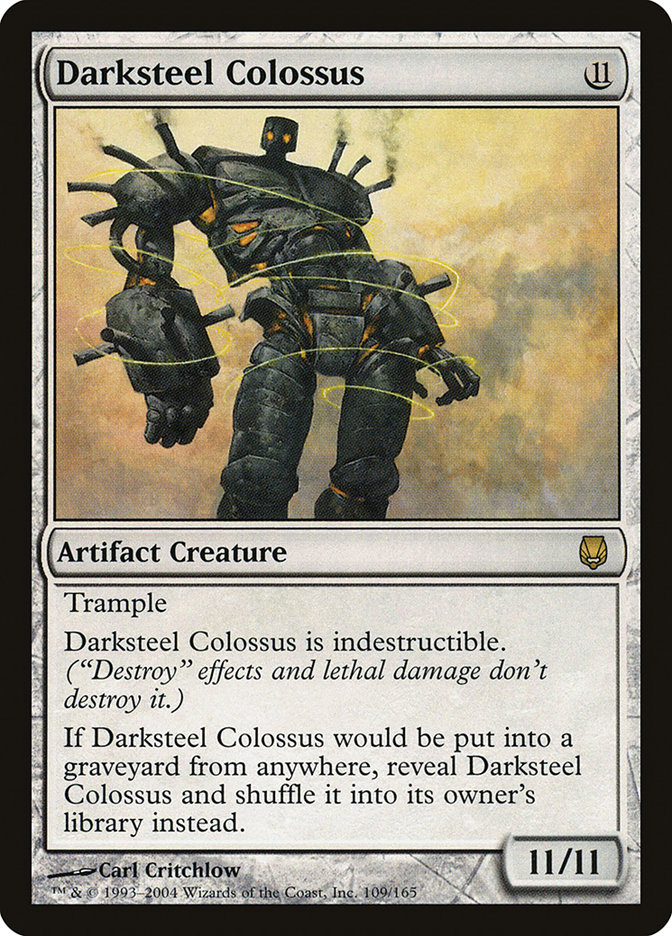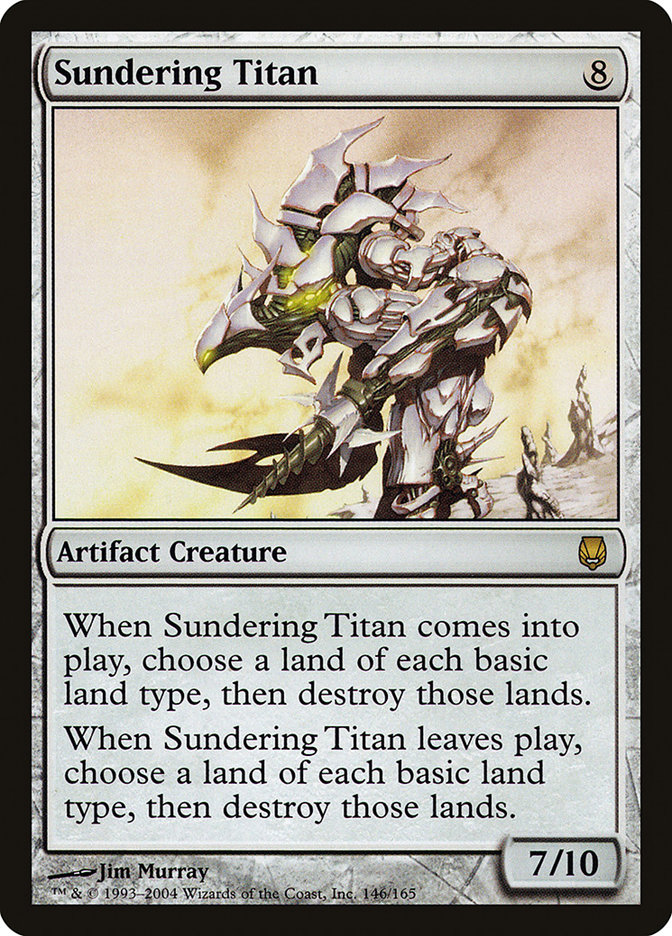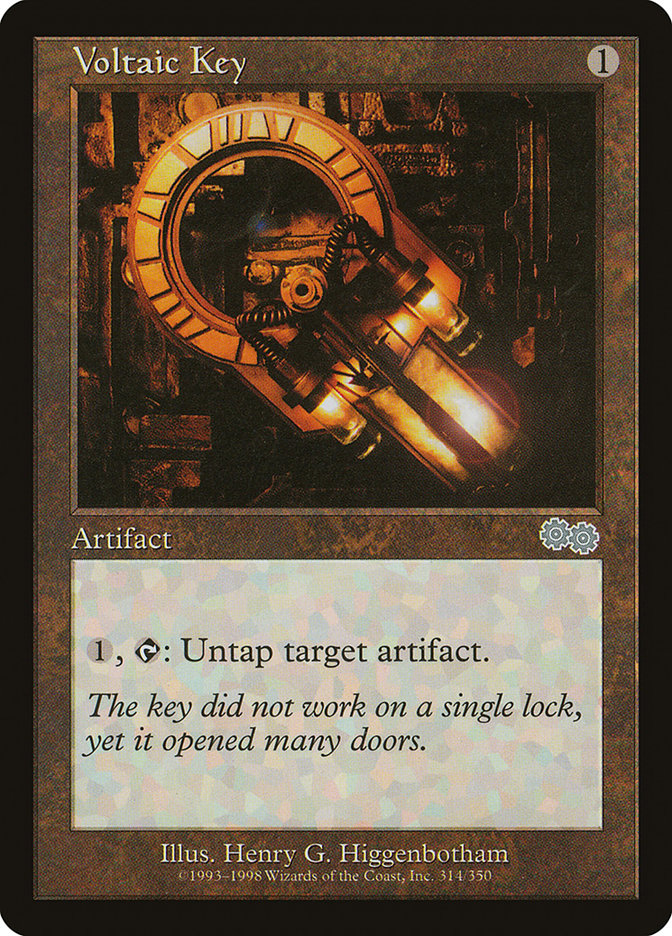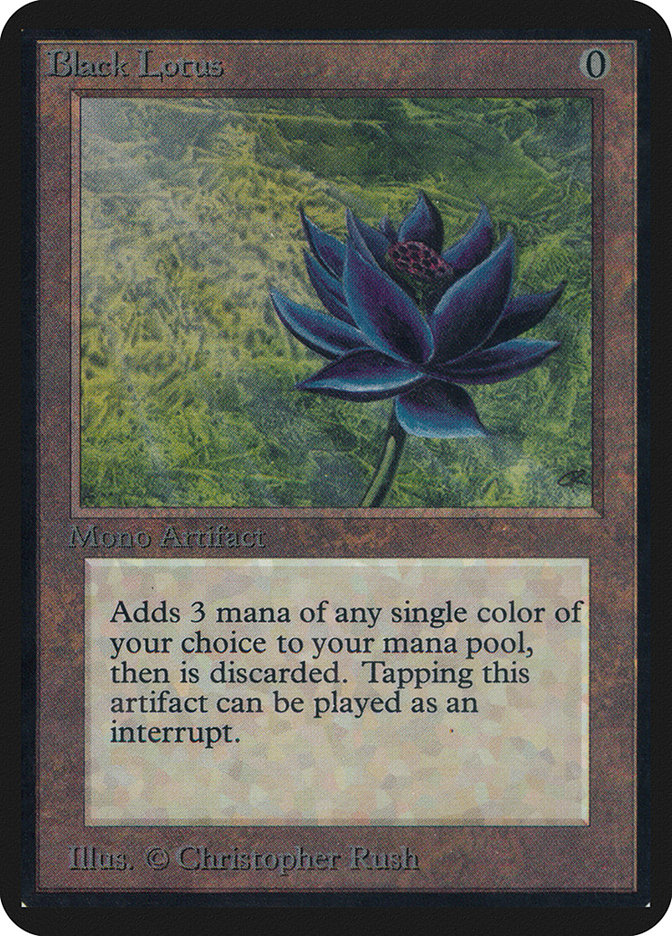All this month we’ve been counting down the top 25 cards of each color,
since, you know, Magic’s 25 now, and I guess this is what it wanted most.
Today, we’ve reached the strongest five cards of the strongest color.
Blue.
#5: Flash
Number five is a curious case. After all, the other four cards on today’s
list were all pretty immediately, obviously way overpowered from jump
street. Flash, on the other hand, spent a decade as an extremely weak bulk
rare before a policy change cause Wizards of the Coast to undo power level
errata that had been issued for the card after a previous rules change had
caused the card to be at risk of behaving bizarrely and taking on an
extremely new and alien existence.
The card was designed to be a way to let you trade a card for the ability
to flash down a creature at instant speed that didn’t normally have flash.
It had an awkward template in order to theoretically enable players to do
some fancy tricks, like getting to use the enters the battlefield triggers
of the creatures they knew were coming in the next set, stuff like
Man-o’-War and Nekrataal.
Not a great card, no big deal.
Flash was reprinted two years later, and again, no one really cared.
However, two more years after that, combo winter was in full effect. Every
format of Magic had been taken over by Academy decks and other ultra fast
combo decks. What’s more, a rules change lead to a very brief period where
a few cards completely broke down in functionality, most notably Lion’s Eye
Diamond.
The rules change allowed players to announce spells and then announce how
they were paying for them, making Lion’s Eye Diamond kind of like Black
Lotus #2, #3, #4, and #5. As it turned out, this lead to, what is probably
the most powerful deck in the history of tournament Magic (the Broken LED
deck detailed
here
).
After a few weeks of the game degenerating, Wizards of the Coast decided to
issue “power level errata” to some cards in an effort to preserve their
intended functionality. While most people were focused on the Lion’s Eye
Diamonds and Lotus Vales of the world, Flash quietly picked up errata that
basically made it so that you couldn’t just pick a creature and not pay for
it, so that you could do the enters the battlefield trick…
…which was the exact trick the card was originally designed to allow for
(albeit, long before they conceived of just how big of design constraints
this could put on them in the future if they changed the types of creatures
they made).
And this is where Time Vault comes in…
Time Vault has had quite a wild ride.
The card has a rich and storied history, beginning with its appearance on
the very first Magic restricted list. It could be combined with Twiddle, as
well as Animate Artifact + Instill Energy, for extra turns (an interaction
Richard Garfield had built into the game and intended for).
Just two months later, in March of 1994, Time Vault was actually banned
outright. The combo was just “too abusive.”
Another two years, and Time Vault was unbanned, since Vintage is supposed
to be the place where everything (except bizarrely, Shahrazad) is legal. To
address the potential abuse, Time Vault was errata’ed to need time
counters, similar to Magosi, the Waterveil.
Keep in mind, this is still before Legacy had even been created as a
format.
With this power level errata in place, Time Vault basically faded from the
limelight. Two years later, it received relatively meaningless errata, and
then another round six years later, bringing us up to 2004.
In the following year, a loophole was found with the card’s strange power
level errata, allowing it to be combined with Flame Fusillade to deal an
arbitrary amount of damage, by skipping your next 100 turns, untapping it
100 times.
A year later (2006 now), Time Vault was again completely reworked in an
effort to avoid combinations along these lines. Backlash against the many
massive and convoluted changes grew, since most of the rest of Magic was
trying to move away from power level errata.
Flash’s power level errata was rolled back, along with nearly all power
level errata in the game, and relatively quickly, players realized it could
be combined with Protean Hulk to assemble plenty of one-turn kill combos.
It took just one month and one major event for Flash to be banned from
Legacy, after one of the most warped, broken Grand Prix in Magic history.
Creatures (12)
- 1 Kiki-Jiki, Mirror Breaker
- 1 Carrion Feeder
- 1 Karmic Guide
- 1 Body Snatcher
- 4 Dark Confidant
- 4 Protean Hulk
Lands (14)
Spells (34)
- 4 Sensei's Divining Top
- 4 Brainstorm
- 4 Mystical Tutor
- 4 Force of Will
- 4 Daze
- 1 Echoing Truth
- 4 Flash
- 1 Massacre
- 4 Chrome Mox
- 4 Counterbalance
Sideboard

Sadin had merely to Flash down a Protean Hulk, not pay, and then find
Karmic Guide and Carrion Feeder.
The Karmic Guide would get back the Hulk, which Carrion Feeder would
promptly sacrifice, this time finding Kiki-Jiki, Mirror Breaker.
Kiki-Jiki would then copy the Karmic Guide, at which point Carrion Feeder
would sacrifice the Kiki-Jiki, allowing the Karmic Guide to get back
Kiki-Jiki, creating a loop.
So, yeah, basically, for two mana and two cards, you could win the game.
That’s pretty good for turn
2
1.
The card was quickly banned and life went on…
Of course in Vintage, Flash was now a force to be reckoned with. Some
Vintage enthusiasts were convinced the strategy wasn’t that good, but it
wasn’t just super consistently winning turn 1, it was leading to a world
where every deck had to be ultra-inbred, and still games were decided on
the first turn more often than not.
Merchant Scroll was absolutely out of control, serving as a Demonic Tutor
for Flash, or as a means of finding Ancestral Recall (the way people
usually used the card). However, there was actually one more super popular
and powerful target:
Brainstorm was still legal as a four-of, and no other deck in history
abused Brainstorm as hard as Flash Hulk. It was actually a very hotly
debated theoretical question whether you’d rather play Ancestral Recall in
your deck, or three Brainstorms. Some people would take two Brainstorms,
while everyone agreed that four Brainstorms was a slam dunk.
It’s not just that Brainstorm is a very overpowered card (which it is).
It’s that Brainstorm’s “drawback” of having to put two cards back was
actually upside in Flash, since the combo piece creatures were actually
much better in your deck than in your hand. If you had them stuck in your
hand, you could Body Snatcher one down, but otherwise, would have to either
play them or make yourself discard them (which involved a lot more work).
Virulent Sliver enjoyed some time in the sun, as did Reveillark, once it
was added to the mix.
Creatures (9)
Lands (14)
Spells (37)

Finally, enough was enough. Flash, Brainstorm, Ponder, and Merchant Scroll
were all restricted at the same time (along with one of Gush’s nine stays
on the restricted list), and the story of one of the more broken strategies
in Magic’s history came to a close.
#4: Mind’s Desire

How many cards get restricted before they even come out?
Skullclamp was known to be broken when it was released, but people got to
play with it for a while. Memory Jar was emergency banned from most formats
very early on, but it was legal as a four-of at first.
Mind’s Desire was actually preemptively added to the Vintage restricted
list and Legacy banned list since the card was so obviously beyond broken.
Still, the card wasn’t banned in all formats. Here’s Hall of Famer Masahi
Oiso’s U/B Mind’s Desire deck that was sort of like a Donate/Illusions
deck, except instead of Donate and Illusions of Grandeur, he got to play
Mind’s Desire and Tendrils of Agony.
Creatures (6)
Lands (17)
Spells (37)
- 1 Tendrils of Agony
- 4 Brainstorm
- 2 Vampiric Tutor
- 4 Accumulated Knowledge
- 3 Intuition
- 3 Cunning Wish
- 4 Mind's Desire
- 2 Merchant Scroll
- 1 Turnabout
- 4 Sapphire Medallion
- 3 Snap
- 2 Deep Analysis
- 4 Chrome Mox
Sideboard

Whatever your mana engine, Mind’s Desire was basically the best possible
way to convert it into a game-winning advantage. For a very different take,
here’s the list Chris McDaniel piloted to a top 4 finish the following
year:
Spells (34)

#3: Time Walk
When I was young, the first Magic card I ever fantasized about was Shivan
Dragon.
Shivan Dragon was the stuff dreams were made of, but eventually my
innocence waned. After all, they may be twenty dollars, buy they are still
appearing in packs. Besides, I had gotten into tournament Magic, and in
tournament Magic, winning with repeated crouching short kicks was valued
more highly than showing just how awesome you were with Shivan Dragon.
It was then that Time Walk transitioned into my new favorite card, and at
$85 a pop, it wasn’t going to be easy to acquire…
…and so I embarked on a journey of finding Magic tournaments to compete
in, win a few dual lands here, a Mana Drain there, and next thing you know,
I’m competing in big tournaments to win “Power.”
The Power 9 (including Time Walk) was largely considered to be the power 10
(with Library of Alexandria included), at least in Michigan. Winning each
one, one-by-one was a true joy that I cannot easily put into words.
By the time I finished winning my power, I had again shed innocence. Time
Walk was obviously unbelievably good, but I had graduated to the debates
between Ancestral Recall and Black Lotus, and I could never go back.
For a while, Time Walk was sort of a glorified Explore, that also untapped
your lands, like a Cloud of Faeries. After all, who uses creatures?
Over the years, Magic’s design philosophy evolved, and creatures came into
fashion, including even, eventually, in Vintage.
Creatures (10)
Planeswalkers (2)
Lands (15)
Spells (33)
- 1 Brainstorm
- 4 Lightning Bolt
- 4 Force of Will
- 1 Time Walk
- 1 Ancestral Recall
- 3 Gush
- 1 Pyroblast
- 1 Black Lotus
- 1 Mox Ruby
- 1 Mox Sapphire
- 1 Ponder
- 2 Spell Pierce
- 4 Preordain
- 4 Mental Misstep
- 1 Fire
- 3 Treasure Cruise
Sideboard

While Time Walk is basically always great, in creature decks the card takes
on wildly increased significance.
An extra attack? Now that is a powerful effect for a negative-one
cost cantrip.
#2: Tinker
While Time Walk will always have a place in our hearts, I think it’s pretty
clear that Tinker eventually took its place at the penultimate spot. I
still remember when I was at WotC and we were working on Mirrodin
and an important call was made.
”
We’ve gotta just not worry about Tinker. We can’t make an artifact set
with nothing worth Tinkering up. We’ve gotta just make the best set we
can and let the chips fall where they may.”

Tinker has enabled some pretty exotic toolboxes among high cost artifacts
that can take over the game.
Creatures (12)
Lands (21)
Spells (27)

In Urza Block Constructed, Tinker had already proven itself
busted, finding Phyrexian Colossus, Mishra’s Helix, Phyrexian Processor,
and more.
Creatures (3)
Lands (25)
Spells (32)

And this is to say nothing of what could have been, had Memory Jar not been
banned from basically everything.
Of course, in Vintage, Darksteel Colossus was a game-changer, with a little
bit of Sundering Titan for good measure.
As the years rolled on, Tinker got even more busted, thanks to Blightteel
Colossus, which now meant Tinker + Time Walk was effectively an immediate
combo kill.
This combination is ridiculous, no question, but in the end, another
artifact proved even scarier to see your opponent Tinker up…
…and it cost just a single mana.
Which brings us back to Time Vault. Shortly after Flash, Brainstorm,
Ponder, Merchant Scroll, and Gush were restricted in Vintage, Time Vault
was finally released and restricted. Voltaic Key + Time Vault is beyond
broken, to be sure, but some animals were not meant to be domesticated, and
Vintage is one such beast.
#1: Ancestral Recall
The battle for dominance between Ancestral Recall and Black Lotus is a tale
as old as time.
However, today’s countdown is exclusively blue cards, which means Ancestral
Recall has the top spot, as it always has.
It’s difficult to single out a specific “Ancestral Recall deck,” as the
card was known to be among the best before the game was ever released. It
was restricted immediately, and has basically been the first blue card in
every Vintage deck that decides to play any.
So, for today’s final list, I’d like to share a list built largely on the
theory of “whoever resolves Ancestral Recall on themselves usually wins.”
Creatures (1)
Lands (15)
Spells (44)
- 4 Brainstorm
- 4 Mana Drain
- 1 Vampiric Tutor
- 1 Mystical Tutor
- 1 Yawgmoth's Will
- 4 Force of Will
- 1 Mana Vault
- 1 Sol Ring
- 1 Demonic Tutor
- 1 Time Walk
- 1 Ancestral Recall
- 1 Mana Crypt
- 4 Gifts Ungiven
- 1 Burning Wish
- 4 Merchant Scroll
- 1 Chain of Vapor
- 2 Misdirection
- 1 Tinker
- 1 Rebuild
- 1 Black Lotus
- 1 Fact or Fiction
- 1 Recoup
- 1 Lotus Petal
- 1 Mox Emerald
- 1 Mox Jet
- 1 Mox Pearl
- 1 Mox Ruby
- 1 Mox Sapphire

This deck blended elements of overpowered Gifts Ungiven decks and Storm
combo decks, all the while optimized for finding and resolving Ancestral
Recall and quickly and reliably as possible.
***
It’s been 25 years, and the range of cards the game has seen is astounding.
Still, some classics were never meant to be topped.
Here’s to seeing what the next 25 bring!


